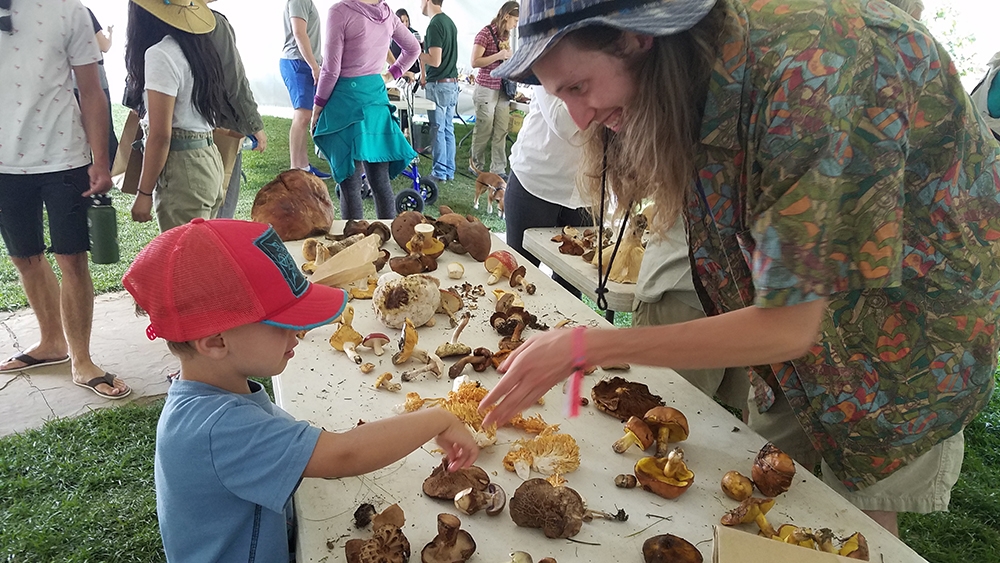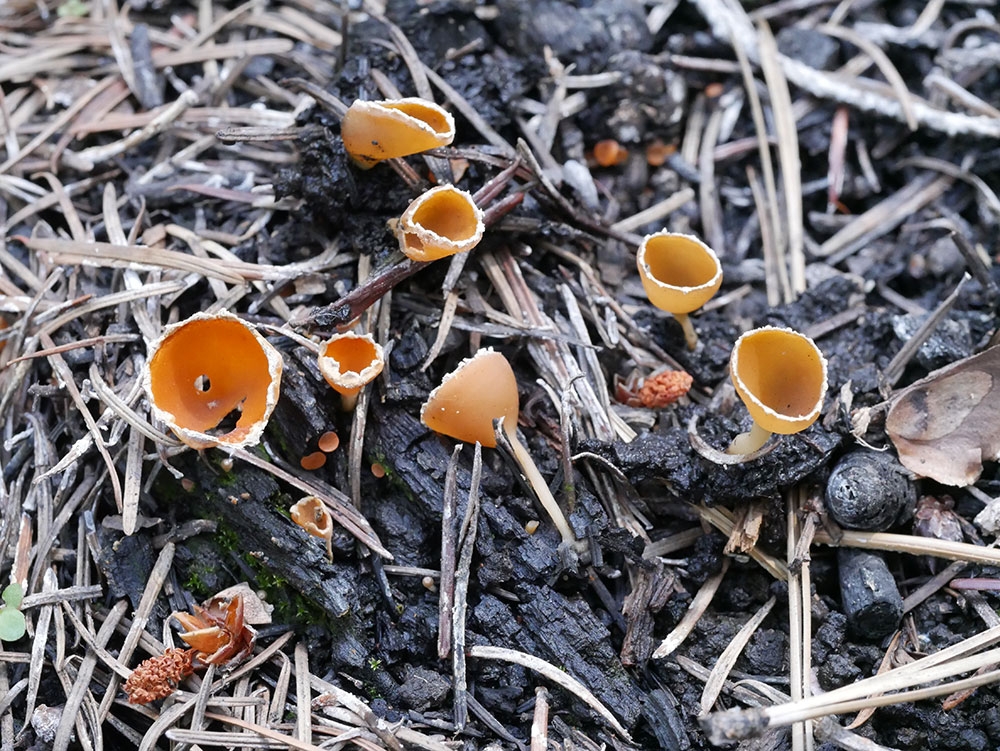Mycological Splendor in the San Juans
As we turned southward out of Montrose, the deep green of a damp forest surrounding the towering San Juan Mountains reassured us that this trip would prove worthwhile. Dr. Andy Wilson and I were making our way to the Telluride Mushroom Festival for the second time. Last year had been notoriously dry, yielding less than an abundance of mycological spoils; this year however, deep snowpack followed by a cool, wet spring would make for a different story.
The Telluride Mushroom Festival is this incredible mix of academic conference-like presentations, field work and interpersonal scientific outreach. Spun throughout it all is a vibe of oddball rebellion mixed with sincere optimism that we can make the world a better place. Andy and I gave back to back presentations about our work at the Sam Mitchel Herbarium of Fungi, introduced folks to the Colorado Mycoflora Project and why collecting mushrooms for science is worthwhile.
After our lectures ended, I joined our mycology lab seasonal, Justin Loucks, in the identification tent that sat in a tiny park in the middle of town. We hunkered down as waves of foragers returned with baskets full of mushrooms varying wildly in color, shape and odor. My goal was to get collectors to donate their specimens to our herbarium and then squeeze as much information as possible out of them about where and when their collections were made. Without much mycological background myself, I relied on Justin to point out those with the most interesting taxa in their baskets. From there I pulled the citizen scientists aside to a picnic table, essentially interviewing them to obtain their names, contact information and as much ecological detail as possible regarding the fungi. Often, we looked over maps to determine just exactly where they were hunting, giving me an accurate and precise set of coordinates to assign to the future museum specimen. These conversations, always touching on the beauty of the forest and the importance of biodiversity research, easily became my favorite part of the festival.
On the following day, Andy, Justin and I were joined by Amy Honan of Western Colorado University and Jeff Ravage of the Coalition for the Upper South Platte to get in on the foray action for ourselves. Amy led us to one of her secret spots near the town of Ophir. We didn’t make it far along the trail before everyone was posted up, surveying their own meter by meter area, carefully documenting each little fungus through photography and field notes. We had already obtained many of the larger, more charismatic species from festival participants, so our focus shifted to smaller and less noticeable forest inhabitants. We collected everything we could fit into our dryer. Andy and I ventured over the white-knuckle-inducing Red Mountain Pass, where we surveyed near the Ironton ghost town before making our way toward Durango. We stopped at the site of the devastating 416 Fire that burned the year prior. Though the area was rather dry, we found a spring upwelling water amid the scorched forest, harboring thousands of the orange cup fungus Geopyxis carbonaria, which grows on wood and forest floor that has been charred by fire.
Our mycology team is still identifying and properly curating the fungi, but in the end we brought back 195 specimens, each with geographic coordinates and collector information, from eight counties in Southwest Colorado. In just a few days the holdings in the Sam Mitchel Herbarium of Fungi from that part of Colorado were nearly doubled. I have no doubt our San Juan foray will keep on giving, as the specimens and their data are studied for centuries to come.
Gallery


Add new comment